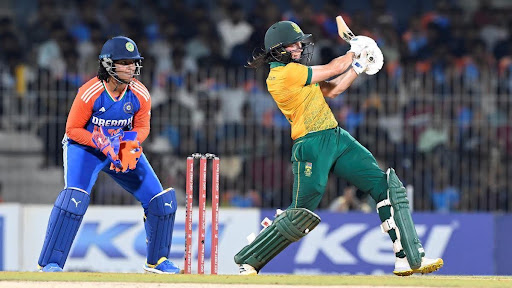
Strategies of South Africa's World Cup Campaign that India Can Adopt
Strategies of South Africa's World Cup Campaign that India Can Adopt
2024-10-22 Author : ch799
India’s performance in recent global tournaments has been under the microscope, especially when compared to teams like South Africa, who have raised the bar with their balanced approach. South Africa’s journey in the latest World Cup offered critical lessons for India, providing a blueprint on areas needing improvement, from fielding to mentality, and overall system support. Below are the three key takeaways India can derive from South Africa’s impressive World Cup campaign.
Fielding Secures Victories
Fielding can often be the unsung hero in cricket, and for South Africa, it was one of the cornerstones of their success. India’s fielding, while improving, is still far behind that of teams like South Africa. For instance, Arundhati Reddy, one of India’s pacers, frequently found herself on the receiving end of dropped catches—a glaring issue that plagued India throughout the tournament. Although India’s fielding has come a long way, exemplified by their sharp performance against Pakistan, there is still room for improvement.
South Africa demonstrated in their semi-final against Australia that sharp, flawless fielding can be the difference between a win and a loss. They executed their bowling plans perfectly, but it was their hawk-like fielding efforts that suffocated Australia and denied them scoring opportunities. India, on the other hand, often had fielders who could be targeted by opposition batters, effectively acting as “pressure valves.”
Withstanding Pressure Isn’t Sufficient
Another area where South Africa excelled was their approach to batting, which involved much more than just absorbing pressure. India’s batting, while composed, often feels like it’s stuck in the mindset of taking games deep. In contrast, teams like South Africa and Australia have adopted a more aggressive, modern approach to T20 cricket—where batting depth is crucial, and top-order players trust that depth enough to attack from the start.
A clear example of this difference was in South Africa’s game against Australia. Despite a slow start, where Tazmin Brits and Laura Wolvaardt struggled to find rhythm early on, they never gave up their aggressive intent. Brits’s boundary hitting reignited the innings, while Wolvaardt and Anneke Bosch maintained the attacking mindset. This aggressive mentality didn’t allow Australia to settle, keeping them on the back foot.
The System Must Rise to the Occasion
It's easy to blame the players for underperforming, but the root of the problem often lies in systemic issues. They hadn’t played a T20I since July, while South Africa came into the tournament fresh off a series against Pakistan in September. The lack of match practice, particularly under lights, was evident in India's fielding and their batting under pressure.
Additionally, the Indian team management didn’t address lingering issues such as the conundrum over who should bat at number three, and there was limited competition for spots within the team. This lack of accountability can lead to players becoming complacent, which hampers team performance.
South Africa, on the other hand, showed what a well-functioning system looks like. They attacked the tournament with precise planning and a focus on details, ensuring that their players were mentally and physically prepared to compete at the highest level. There was also an unrelenting focus on teamwork, with every player fighting for the badge and the common goal of winning. India has the talent and potential, but the coaching staff and support system need to be more proactive in addressing weaknesses and ensuring players are kept on their toes.